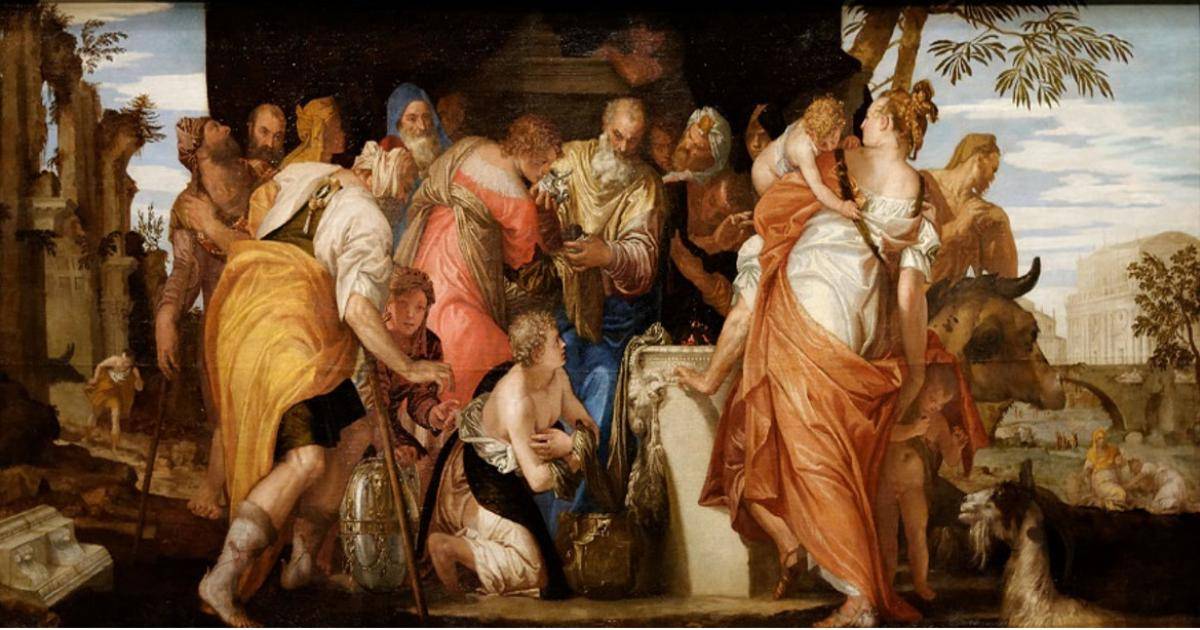In the glittering salons of 18th-century Europe, one man stood out among the powdered wigs and silk finery. He spoke multiple languages with ease, played the violin like a virtuoso, and captivated audiences with tales of historical events so vivid it seemed he had witnessed them first-hand. This enigmatic figure was known as the Count of St. Germain, and his story is one that continues to fascinate and perplex historians to this day.
The Count first appeared in London society in 1743, seemingly out of thin air. Dark-haired and appearing to be in his mid-40s, he quickly became the talk of the town. But it wasn't just his charm and wit that had people buzzing – it was the air of mystery that surrounded him. Nobody knew where he came from or who his family was. In an age where lineage was everything, the Count was a complete unknown.
But what he lacked in background, he more than made up for in talents. He was said to speak every European language fluently, compose music that could bring listeners to tears, and possess an encyclopaedic knowledge of history. Some even claimed he could remove flaws from diamonds and turn base metals into gold. It was as if he had spent several lifetimes mastering these skills – and according to the Count himself, that's exactly what he had done.
You see, the Count of St. Germain claimed to be immortal. He hinted at being hundreds of years old, casually dropping anecdotes about historical figures as if he had known them personally. And strangely enough, many people believed him. The famous writer Voltaire referred to him as "the man who knows everything and never dies."
The Count's influence spread far beyond London. In France, he gained the trust of King Louis XV and his mistress Madame de Pompadour. He advised on diplomatic matters and even set up a textile factory for the king. In the Dutch Republic, he helped establish a porcelain factory. Everywhere he went, he left a trail of amazed admirers and baffled skeptics.
But as with all great mysteries, there were those who sought to expose the truth. In 1745, the Count was arrested on suspicion of being a spy. Yet even under interrogation, he maintained his enigmatic persona, refusing to reveal his true identity or origins. Somehow, he managed to talk his way out of trouble and was released without charge.
The Count's story takes an even stranger turn in 1784 when he supposedly died in the castle of Prince Charles of Hesse-Cassel. But like any good immortal, death was just a minor inconvenience. Sightings of the Count continued for decades after his alleged demise. He was reported at a Masonic convention in Paris, in an audience with Catherine the Great in Russia, and even hiking Mount Shasta in California in 1930.
These post-mortem appearances have led to all sorts of wild theories. Some claim the Count was an Ascended Master, a spiritual being on par with Buddha or Jesus. Others believe he was actually several historical figures, including Christopher Columbus and Francis Bacon. New Age movements have embraced him as a mystical guru, with some even claiming to channel his spirit.
But what's the truth behind this extraordinary tale? Was the Count of St. Germain really an immortal being with supernatural powers? Or was he simply one of history's greatest con artists?
The boring truth is probably somewhere in between. While many of the Count's exploits are well-documented, a lot of his more fantastical abilities were likely exaggerated or completely fabricated – often by the Count himself. His linguistic skills, while impressive, were probably not as extensive as claimed. His "revolutionary" textile dyes never actually revolutionized anything. And those diamond-fixing and gold-making tricks? Classic sleight of hand, most likely.
As for his apparent immortality, well, that's a bit harder to explain away. The sightings after his death are intriguing, but it's worth noting that most of them come from people already inclined to believe in the supernatural. It's possible that the Count's legend simply took on a life of its own, with wishful thinkers and opportunists keeping the myth alive long after the man himself was gone.
So who was the Count of St. Germain, really? On his deathbed (assuming it really was his deathbed), he claimed to be the son of Francis II Rákóczi, a Hungarian nobleman. This would explain his education and his mysterious background – apparently, his death was faked when he was a child to protect him from political enemies. It's a plausible story, but given the Count's lifelong habit of spinning tales, we can't be sure it's the truth.
In the end, perhaps it doesn't matter who the Count really was. What's undeniable is that he was a remarkable individual who left an indelible mark on history. Whether through genuine talent or masterful deception (or likely a bit of both), he managed to charm his way into the highest echelons of European society. He rubbed shoulders with kings and philosophers, leaving them all equally bewildered and impressed.
The Count of St. Germain may not have been immortal in the literal sense, but in a way, he achieved a kind of immortality. Over 200 years after his supposed death, we're still talking about him, still trying to unravel the mystery of who he really was. In that sense, the Count's greatest trick wasn't turning lead into gold or living forever – it was turning himself into a legend that has endured for centuries.
So the next time you're at a dinner party and someone asks you to pass the salt, why not regale them with the tale of the Count of St. Germain? Who knows – maybe you'll spark a conversation that lasts another 200 years.


